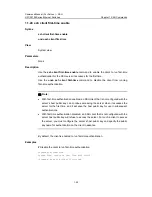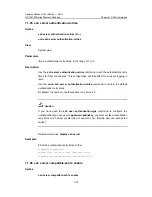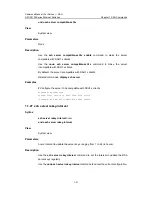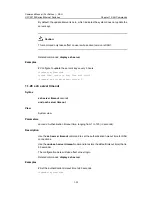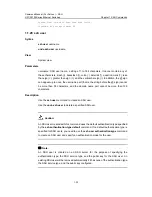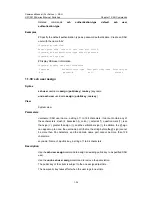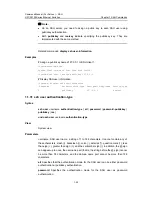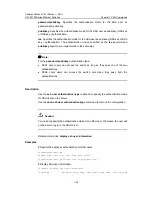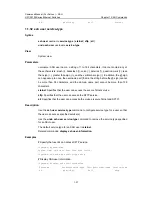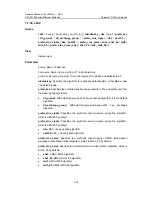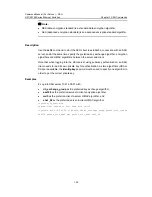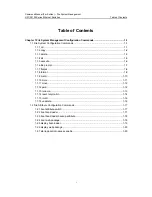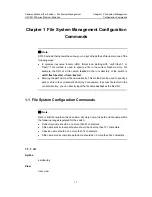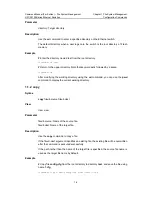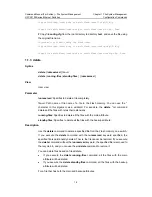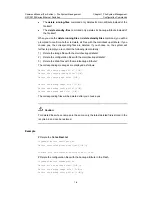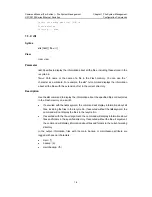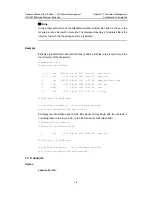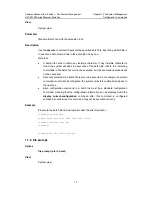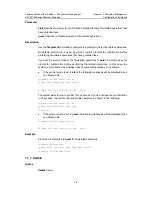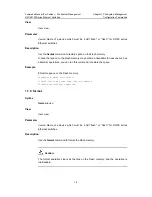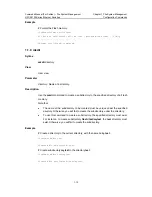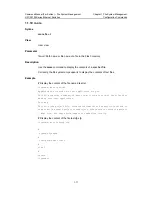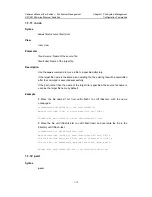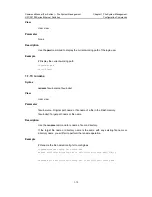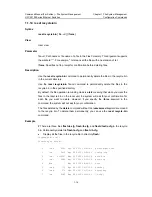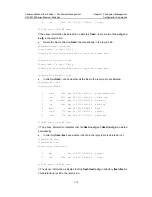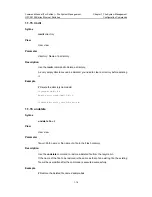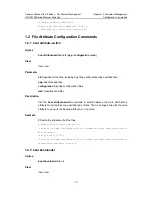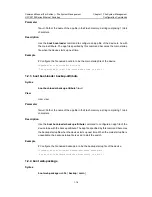
Command Manual (For Soliton) – File System Management
H3C S3100 Series Ethernet Switches
Chapter 1 File System Management
Configuration Commands
1-3
Copy unit1>flash:/config.cfg to unit1>flash:/test/1.cfg?[Y/N]:y
...
%Copy file unit1>flash:/config.cfg to unit1>flash:/test/1.cfg...Done.
# Copy file
config.cfg
from the root directory to directory
test
, and save the file using
the original file name.
<Sysname> copy flash:/config.cfg flash:/test
Copy unit1>flash:/config.cfg to unit1>flash:/test/config.cfg?[Y/N]:y
...
%Copy file unit1>flash:/config.cfg to unit1>flash:/test/config.cfg...Done.
1.1.3 delete
Syntax
delete
[
/unreserved
]
file
-
url
delete
{
running-files
|
standby-files
} [
/unreserved
]
View
User view
Parameter
/unreserved
: Specifies to delete a file completely.
file
-
url
: Path name or file name of a file in the Flash memory. You can use the *
character in this argument as a wildcard. For example, the
delete
*.txt command
deletes all the files with txt as their extensions.
running-files
: Specifies to delete all the files with the main attribute.
standby-files
: Specifies to delete all the files with the backup attribute.
Description
Use the
delete
command to delete a specified file from the Flash memory on a switch.
If you execute the
delete
command with the
/unreserved
keyword specified, the
specified file is permanently deleted. That is, the file cannot be restored. If you execute
the
delete
command without the
/unreserved
keyword, the specified file is removed to
the recycle bin, and you can use the
undelete
command to restore it.
You can delete files based on file attribute.
z
If you execute the
delete running-files
command, all the files with the main
attribute will be deleted.
z
If you execute the
delete standby-files
command, all the files with the backup
attribute will be deleted.
For a file that has both the main and backup attributes:

